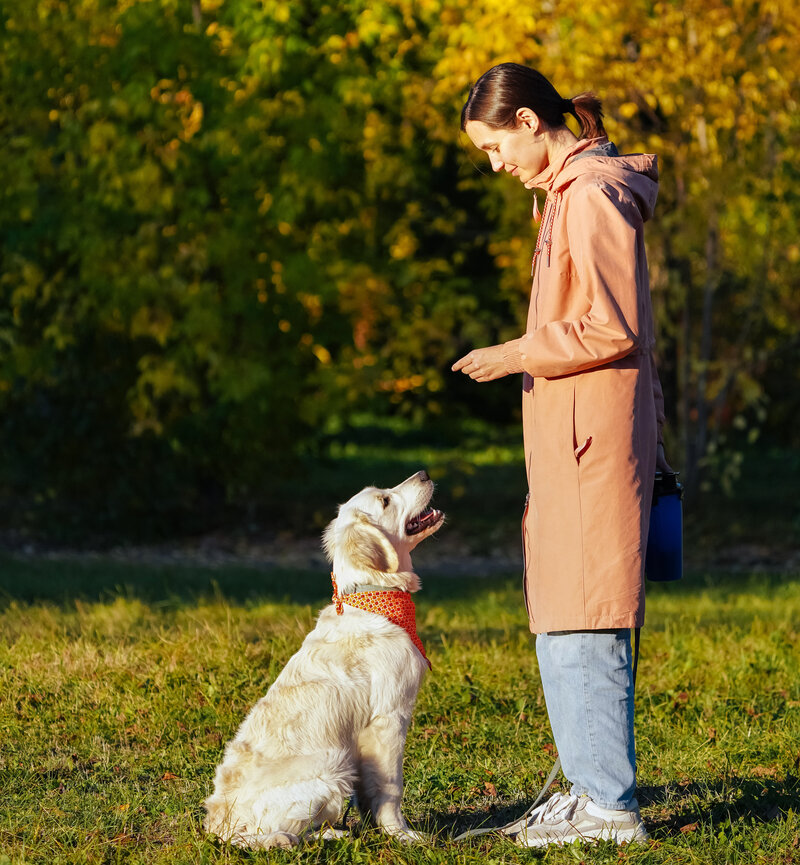When you're teaching your dog to climb an agility ramp safely, the first step is evaluating their readiness. Consider their physical health and confidence level, and make certain they've mastered basic obedience commands. Once you're confident they're ready, selecting the right ramp becomes essential. You'll want to introduce the ramp gradually, starting on a flat surface. Positive reinforcement with treats or toys can be invaluable as you guide them up. But how do you guarantee their enthusiasm doesn't wane while keeping the training both safe and effective? Let's explore the key strategies that make this possible.
Assess Your Dog's Readiness
Before you begin training your dog to climb an agility ramp, how do you know if they're ready? Start by evaluating your dog's physical health. Make sure they're in good shape and not suffering from any injuries or joint issues. A visit to the vet can confirm they're fit for agility training.
Next, consider your dog's age. Young puppies and older dogs might be more prone to injury, so it's vital to examine their physical capabilities carefully.
Observe your dog's behavior and temperament. Are they generally confident and curious, or do they tend to be anxious and hesitant in new situations? A confident dog is more likely to adapt well to agility training. However, if your dog shows signs of fearfulness or anxiety, you may need to work on building their confidence before introducing agility equipment.
Finally, make sure your dog has basic obedience training. Commands like "sit," "stay," and "come" are fundamental for safe and effective training. This obedience foundation will make it easier for your dog to follow your guidance on the ramp.
Choose the Right Ramp
Once you've determined that your dog is ready for agility training, selecting the right ramp becomes your next focus. Not all ramps are created equal, so you'll need to evaluate a few key factors to guarantee safety and effectiveness.
First, think about the ramp's material. Look for something sturdy and non-slip, like rubber or textured surface, to prevent your dog from slipping during training. Avoid smooth surfaces that could lead to accidents.
Next, assess the ramp's height and incline. Choose a ramp that matches your dog's size and skill level. A gradual incline is ideal for beginners, minimizing stress on your dog's joints and reducing the risk of injury. Make sure the ramp is long enough to provide a gentle slope but not so long that it becomes cumbersome.
Portability is another important factor. If you're training in different locations or have limited storage, a foldable or lightweight ramp can be convenient. Check that it's easy to set up and take down without compromising stability.
Finally, always inspect the ramp for any defects or wear. Regular maintenance guarantees it remains safe and reliable for your dog's training sessions.
Introduce the Ramp Gradually
Introducing your dog to the ramp gradually is essential to building their confidence and ensuring a positive experience. Start by letting your dog explore the ramp while it's flat on the ground. This helps them familiarize themselves with its texture and structure without the pressure of height.
Allow your dog to sniff, walk on, or even sit on the ramp at their obedience course own pace without any rush. Patience is vital here, as forcing them could lead to fear or resistance.
Once your dog seems comfortable with the flat ramp, you can begin to elevate it slightly. Keep the incline minimal initially, so it doesn't seem overwhelming. Encourage your dog to walk up and down the ramp slowly, supporting them gently if needed.
Always stay close to offer comfort and assurance, letting them know it's a safe space.

Gradually increase the ramp's height over several sessions, always observing your dog's reactions. If they show signs of hesitation or discomfort, lower the ramp and allow more time at that level.
Use Positive Reinforcement
Positive reinforcement is a powerful tool when teaching your dog to climb an agility ramp. It encourages your dog to associate the ramp with positive experiences. Start by using treats or their favorite toy as a reward. When your dog shows interest in the ramp, reward them immediately. This helps them understand that the ramp is a good thing. Make sure to use a happy tone and praise them verbally as well.
Next, guide your dog onto the ramp with the treat or toy. If they place even one paw on it, reward them. Gradually encourage more steps and reward every small victory. This will build their confidence and make the learning process enjoyable.
Be consistent with your rewards. Dogs thrive on routine, and knowing they'll receive a treat or praise will motivate them to try again. Avoid using negative words or actions if they hesitate; patience is key.
Monitor and Adjust Training
Keep an eye on your dog's progress as they tackle the agility ramp. Pay attention to their confidence and comfort level. If they seem hesitant or stressed, it might be time to reassess your approach. Some dogs take longer to adjust, and that's perfectly okay. Adjust the training pace according to your dog's needs, ensuring they're always comfortable and engaged.
Notice if your dog is consistently struggling at a particular point on the ramp. This could indicate that the incline is too steep or that they're unsure about footing. In such cases, consider lowering the ramp's angle or practicing on a flat surface until they gain more confidence. Always be ready to modify the training environment to support their learning process.
Be sure to celebrate small victories. If your dog makes it halfway up the ramp, reward them with praise and treats. This positive reinforcement will encourage them to keep trying.
Keep training sessions short and enjoyable, avoiding over-exhaustion or frustration. If you find your dog losing interest, switch up the routine or introduce new challenges to keep their motivation high.






























